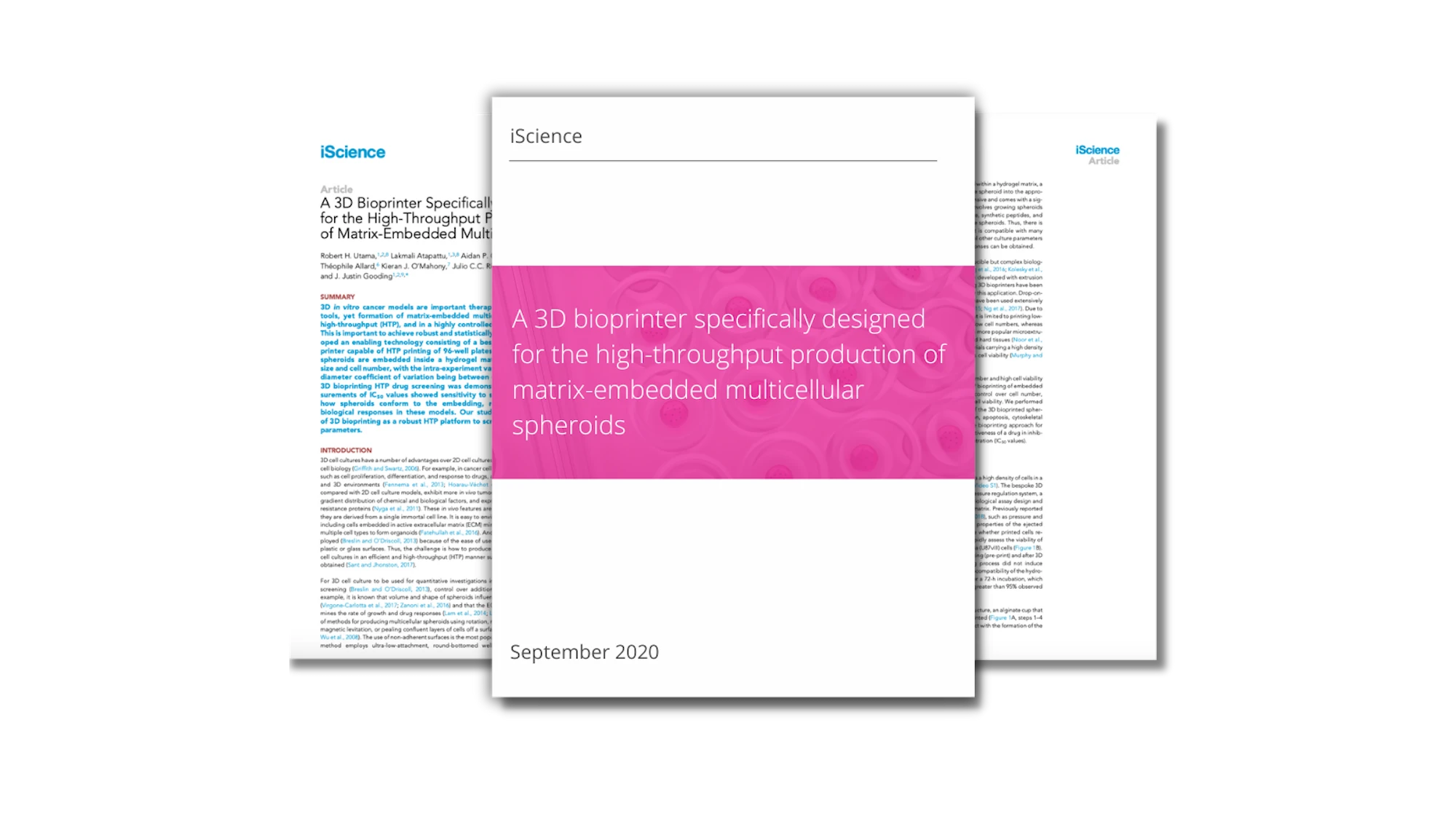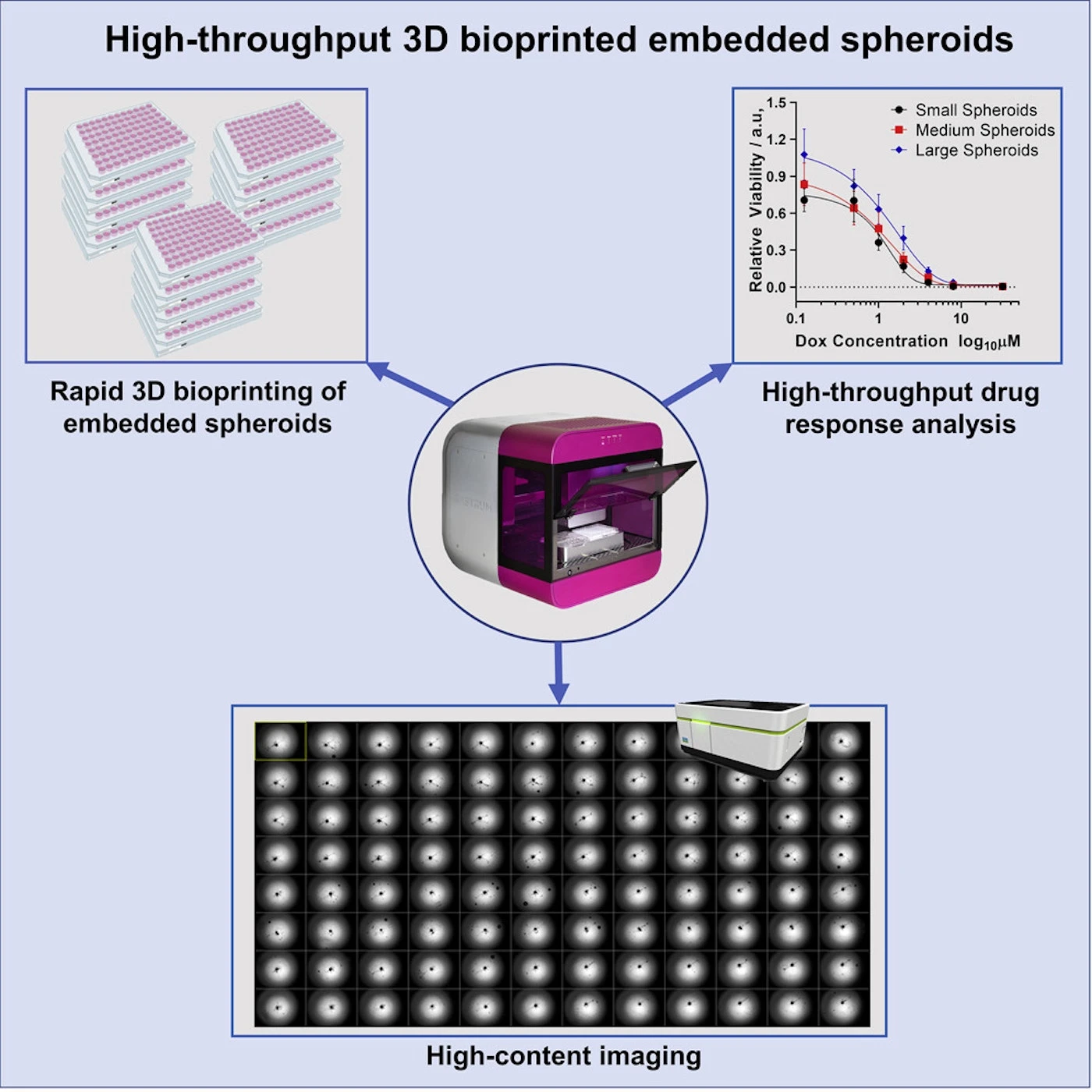
A 3D bioprinter specifically designed for the high-throughput production of matrix-embedded multicellular spheroids
Highlights
- 3D bioprinter for the high-throughput production of embedded 3D multicellular spheroids
- Bioprinted spheroids are biologically similar to manually produced spheroids
- Parameters such as spheroid size and embedding affect the response toward doxorubicin
- High-throughput screening applications with high content imaging and viability assay
Summary
3D in vitro cancer models are important therapeutic and biological discovery tools, yet formation of matrix-embedded multicellular spheroids prepared in high-throughput (HTP), and in a highly controlled manner, remains challenging. This is important to achieve robust and statistically relevant data. Here, we developed an enabling technology consisting of a bespoke drop-on-demand 3D bioprinter capable of HTP printing of 96-well plates of spheroids. 3D multicellular spheroids are embedded inside a hydrogel matrix with precise control over size and cell number, with the intra-experiment variability of embedded spheroid diameter coefficient of variation being between 4.2% and 8.7%. Application of 3D bioprinting HTP drug screening was demonstrated with doxorubicin. Measurements of IC50 values showed sensitivity to spheroid size, embedding, and how spheroids conform to the embedding, revealing parameters shaping biological responses in these models. Our study demonstrates the potential of 3D bioprinting as a robust HTP platform to screen biological and therapeutic parameters.
